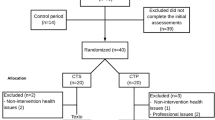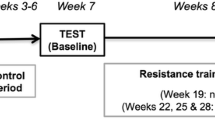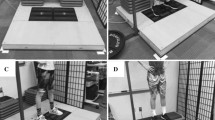Abstract
Background and aims
Declines in hamstrings and quadriceps maximal and rapid strength are commonly reported as a consequence of aging; however, few studies have investigated the influence of age on maximal and rapid hamstrings to quadriceps (H/Q) strength ratios. This study aimed to examine the effects of age on leg extension and flexion maximal and rapid torque production, H/Q strength ratios, and muscle power in healthy, young and old females.
Methods
Fifteen young (21 ± 2 years) and 15 old (69 ± 7 years) females performed 3 isometric leg extension and flexion maximal voluntary contractions (MVCs), from which peak torque (PT), early (0–30 ms) and late (0–200 ms) phase rate of torque development (RTD), and PT and RTD H/Q strength ratios were extracted. Lower-body peak power output (P max) was assessed through a vertical jump test.
Results
P max, PT, and early (RTD30) and late (RTD200) RTD variables of the leg extensors and flexors were lower (P ≤ 0.048) and PT and RTD200 H/Q strength ratios were higher (P ≤ 0.030) in the old compared to the younger females; however, no difference was observed for RTD30 H/Q (P = 0.300). There were also significant negative relationships in the older (r = −0.616 and −0.522; P = 0.014 and 0.046) but not the younger (r = 0.295 and −0.109; P = 0.286 and 0.698) females between P max and RTD30 and RTD200 H/Q strength ratios.
Conclusion
The higher RTD200 H/Q ratio for the older females may contribute to the muscle power deficits often observed in elderly populations. Practitioners may use these findings to help identify older adults with low muscle power capacities and possibly overall functional decline.


Similar content being viewed by others
References
Chandler JM, Duncan PW, Kochersberger G et al (1998) Is lower extremity strength gain associated with improvements in physical performance and disability in frail, community-dwelling elders. Arch Phys Med Rehabil 79:24–30
Holsgaard Larsen A, Caserotti P, Puggaard L et al (2007) Reproducibility and relationship of single-joint strength vs multi-joint strength and power in aging individuals. Scand J Med Sci Sports 17:43–53
Metter EJ, Talbot LA, Schrager M et al (2002) Skeletal muscle strength as a predictor of all-cause mortality in healthy men. J Gerontol A 57:B359–B365
He W, Goodkind D, Kowal P (2016) An aging world: 2015 international population reports. United States Census Bureau
Runnels ED, Bemben DA, Anderson MA et al (2005) Influence of age on isometric, isotonic, and isokinetic force production characteristics in men. J Geriatr Phys Ther 28:74–84
Thompson BJ, Ryan ED, Sobolewski EJ et al (2013) Age related differences in maximal and rapid torque characteristics of the leg extensors and flexors in young, middle-aged and old men. Exp Gerontol 48:277–282
Crozara LF, Morcelli MH, Marques NR et al (2013) Motor readiness and joint torque production in lower limbs of older women fallers and non-fallers. J Electromyogr Kinesiol 23:1131–1138
Ogawa M, Yasuda T, Abe T (2012) Component characteristics of thigh muscle volume in young and older healthy men. Clin Phys Funct Imaging 32:89–93
Theou O, Gareth JR, Brown LE (2008) Effect of rest interval on strength recovery in young and old women. J Strength Cond Res 22:1876–1881
Hogrel J-Y, Barnouin Y, Azzabou N et al (2015) NMR imaging estimates of muscle volume and intramuscular fat infiltration in the thigh: variations with muscle, gender, and age. Age (Dordr) 37:9798
Hayes KW, Falconer J (1992) Differential muscle strength decline in osteoarthritis of the knee. A developing hypothesis. Arthritis Rheum 5:24–28
Hall KD, Hayes KW, Falconer J (1993) Differential strength decline in patients with osteoarthritis of the knee: revision of a hypothesis. Arthritis Rheum 6:89–96
Jordan MJ, Aagaard P, Herzog W (2015) Rapid hamstrings/quadriceps strength in ACL-reconstructed elite alpine ski racers. Med Sci Sports Exerc 47:109–119
Zebis MK, Andersen LL, Ellingsgaard H et al (2011) Rapid hamstring/quadriceps force capacity in male vs. female elite soccer players. J Strength Cond Res 25:1989–1993
Marcell TJ, Hawkins SA, Wiswell RA (2014) Leg strength declines with advancing age despite habitual endurance exercise in active older adults. J Strength Cond Res 28:504–513
Jaiyesimi AO, Jegede J (2005) Hamstring and quadriceps strength ratio: effect of age and gender. JNSP 15:54–58
Baroni BM, Geremia JM, Rodrigues R et al (2013) Functional and morphological adaptations to aging in knee extensor muscles of physically active men. J Appl Biomech 29:535–542
Melo RC, Takahashi AC, Quitério RJ et al (2016) Eccentric torque-producing capacity is influenced by muscle length in older healthy adults. J Strength Cond Res 30:259–266
Thompson BJ, Ryan ED, Sobolewski EJ et al (2013) Can maximal and rapid isometric torque characteristics predict playing level in division I American collegiate football players? J Stength Cond Res 27:655–661
Thorstensson A, Karlsson J, Viitasalo JHT et al (1976) Effect of strength training on EMG of human skeletal muscle. Acta Physiol Scand 98:232–236
Kawazoe T, Takahashi T (2003) Recovery of muscle strength after high tibial osteotomy. J Orthop Sci 8:160–165
Häkkinen K, Kallinen M, Izquierdo M et al (1998) Changes in agonist-antagonist EMG, muscle CSA, and force during strength training in middle-aged and older people. J Appl Physiol 84(4):1341–1349
Palmer TB, Thiele RM, Thompson BJ (2017) Age-related differences in maximal and rapid torque characteristics of the hip extensors and dynamic postural balance in healthy, young and old females. J Strength Cond Res 31(2):480–488
Rhea MR, Kenn JG, Dermody BM (2009) Alterations in speed of squat movement and the use of accommodated resistance among college athletes training for power. J Strength Cond Res 23:2645–2650
Sobolewski EJ, Smith DB, Thompson BJ et al (2012) Test-retest reliability of peak power, average power, and vertical jump height using portable commercial measurement systems. J Stength Cond Res 26(Suppl 1):S44
Palmer TB, Thiele RM, Conchola EC et al (2016) A preliminary study of the utilization of maximal and rapid strength characteristics to identify chair-rise performance abilities in very old adults. J Geriatr Phys Ther 39:102–109
Bohannon RW (1986) Test-retest reliability of hand-held dynamometry during a single session of strength assessment. Phys Ther 66:206–209
Arnold CM, Warkentin KD, Chilibeck PD et al (2010) The reliability and validity of handheld dynamometry for the measurement of lower-extremity muscle strength in older adults. J Strength Cond Res 24:815–824
Blazevich AJ, Cannavan D, Horne S et al (2009) Changes in muscle force–length properties affect the early rise of force in vivo. Muscle Nerve 39:512–520
Oliveira FBD, Rizatto GF, Denadai BS (2013) Are early and late rate of force development differently influenced by fast-velocity resistance training? Clin Physiol Funct Imaging 33:282–287
Aagaard P, Magnusson PS, Larsson B et al (2007) Mechanical muscle function, morphology, and fiber type in lifelong trained elderly. Med Sci Sports Exerc 39:1989–1996
Abe T, Ogawa M, Thiebaud RS et al (2014) Is muscle strength ratio a criterion for diagnosis of site-specific muscle loss? Geriatr Gerontol Int 14:837–844
Berryman N, Bherer L, Nadeau S et al (2013) Executive functions, physical fitness and mobility in well-functioning older adults. Exp Gerontol 48:1402–1409
Häkkinen K, Alen M, Kallinen M et al (1998) Muscle CSA, force production, and activation of leg extensors during isometric and dynamic actions in middle-aged and elderly men and women. J Aging Phys Act 6:232–247
Requena B, de Villarreal ES-S et al (2011) Relationship between postactivation potentiation of knee extensor muscles, sprinting and vertical jumping performance in professional soccer players. J Strength Cond Res 25:367–373
DeVita P, Hortobagyi T (2000) Age causes a redistribution of joint torques and powers during gait. J Appl Physiol 88:1804–1811
Maden-Wilkinson T, McPhee J, Rittweger J et al (2014) Thigh muscle volume in relation to age, sex and femur volume. Age (Dordr) 36:383–393
Rech A, Radaelli R, Goltz FR et al (2014) Echo intensity is negatively associated with functional capacity in older women. Age (Dordr) 36:1–9
Lamoureux EL, Sparrow W, Murphy A et al (2001) Differences in the neuromuscular capacity and lean muscle tissue in old and older community-dwelling adults. J Gerontol A 56:M381–M385
Andersen LL, Aagaard P (2006) Influence of maximal muscle strength and intrinsic muscle contractile properties on contractile rate of force development. Eur J Appl Physiol 96:46–52
Acknowledgements
There was no funding received for this study. We would like to thank Tara Henderson, Rachel Pesarchick, Travis Ritt, and Melvin Stitt for their dedication and invaluable assistance with this study.
Author information
Authors and Affiliations
Corresponding author
Ethics declarations
Conflict of interest
On behalf of all authors, the corresponding author states that there is no conflict of interest.
Human and animal rights
All procedures performed in this study were in accordance with the ethical standards of the university’s institutional review board for human subject’s research.
Informed Consent
Each participant gave informed consent prior to the study.
Rights and permissions
About this article
Cite this article
Palmer, T.B., Followay, B.N. & Thompson, B.J. Age-related effects on maximal and rapid hamstrings/quadriceps strength capacities and vertical jump power in young and older females. Aging Clin Exp Res 29, 1231–1239 (2017). https://doi.org/10.1007/s40520-017-0734-7
Received:
Accepted:
Published:
Issue Date:
DOI: https://doi.org/10.1007/s40520-017-0734-7




